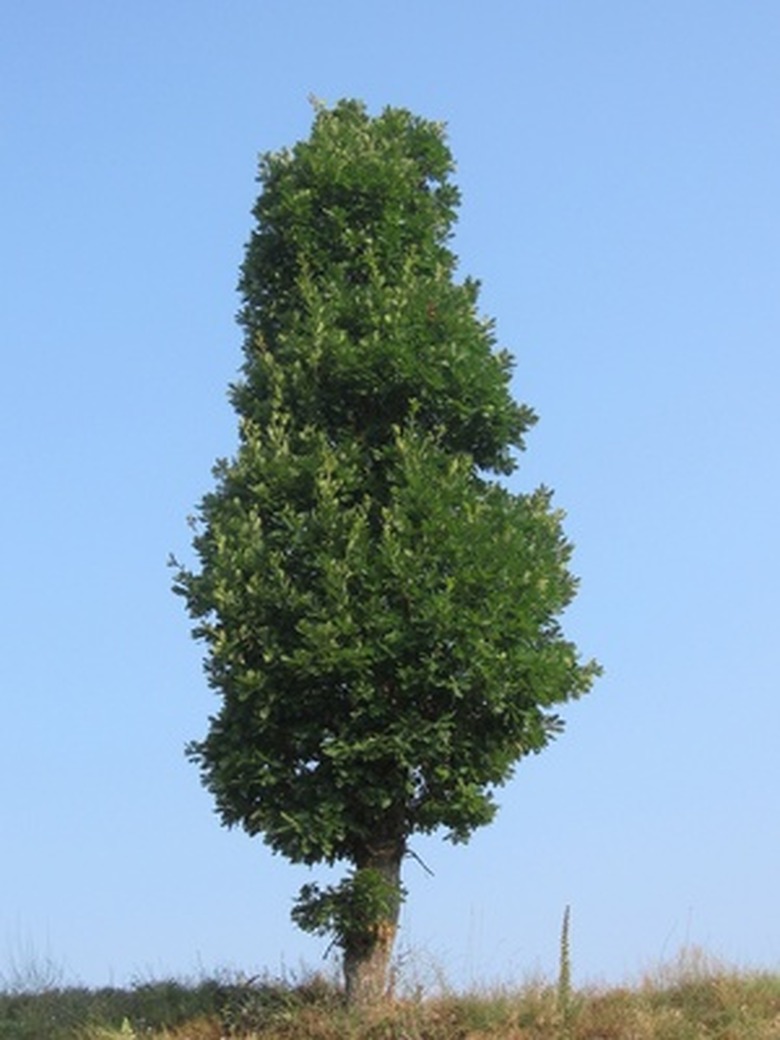Facts Of Evergreens
Evergreens are plants that retain their leaves all throughout the year. They are the opposite of deciduous plants, which have foliage that falls off upon maturity. Many different varieties of evergreens exist, both shrubs and trees. Some examples of evergreens include most types of conifers, cycads, holly, live oaks and most angiosperms.
Appearance
Evergreen shrubs and trees come in many different colors (bark, foliage, berries and cones). From the vibrant deep green Japanese yew (which bears bright red berries), to silvery blue junipers and the greenish blue needles of Scotch pine, there are no specific set colors for evergreens.
Reasons
It is important to understand why some plants are evergreen, as opposed to deciduous. Leaves fall off of deciduous trees annually in order to adapt to either dry or cold seasons. Evergreen plants are not as common as deciduous plants in cool areas. In places where there is valid reason to be deciduous (such as particularly dry or cold weather), being an evergreen plant is generally in order to adapt to lower levels of nutrients. Whenever leaves fall off, deciduous trees lose valuable nutrients.
- Evergreens are plants that retain their leaves all throughout the year.
- In places where there is valid reason to be deciduous (such as particularly dry or cold weather), being an evergreen plant is generally in order to adapt to lower levels of nutrients.
Problems
As with any plant, there are some possible pests and diseases that could afflict damage upon evergreens. However, with evergreens what is much more problematic than any pests or diseases is air pollution over the long term, as well as toxic substances and ash being in the air. This causes far more injury to evergreens than to deciduous plants, due to the fact that deciduous trees shed their leaves seasonally (and are therefore less prone to long-term damage, if the leaves were exposed to toxic matter or ash).
Cultivation
Different varieties of evergreen trees have totally different preferences for water. Those that are tolerant of drought, for example, have different water requirements than those that are not. The majority of evergreens prefer to have full sun, although some can manage partial shade. During times of excessive wind and dryness, evergreens are capable of thriving if they are provided with supplemental water. All of them work well with mulching.
- As with any plant, there are some possible pests and diseases that could afflict damage upon evergreens.
- However, with evergreens what is much more problematic than any pests or diseases is air pollution over the long term, as well as toxic substances and ash being in the air.
Varieties
There are many different varieties of evergreen plants in existence. Some well-known evergreens include the Douglas fir, White fir, Robusta green, Chinese juniper, Moonglow, Spearmint, Spartan, Wichita Blue, Manhattan Blue, European larch, Austrian pine, Mugo pine, Scotch pine, Pendula, Colorado blue spruce and White spruce.
